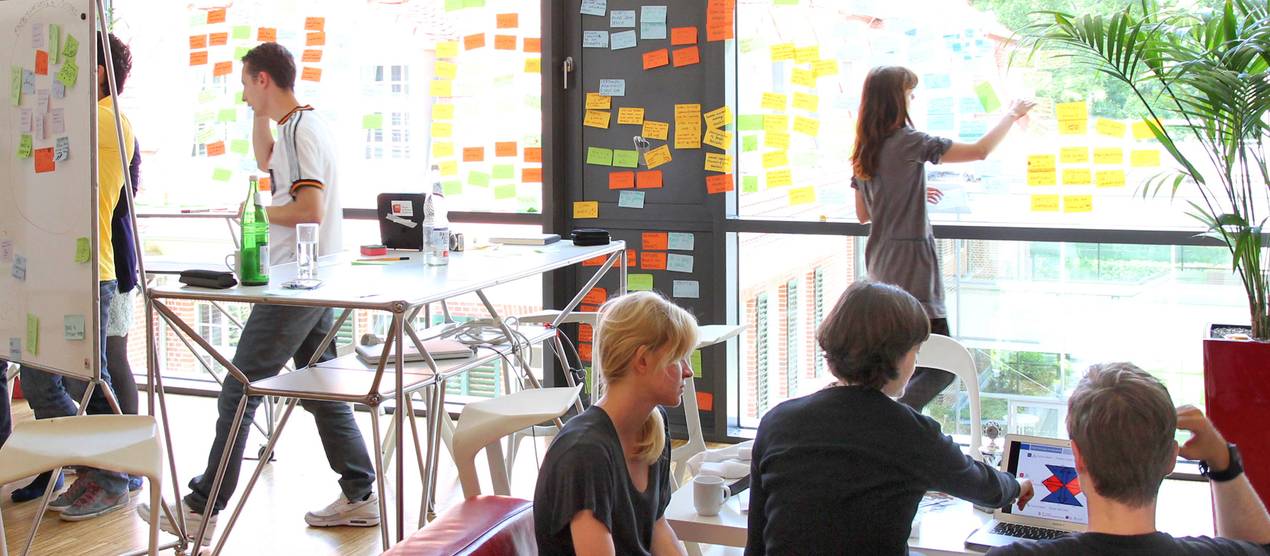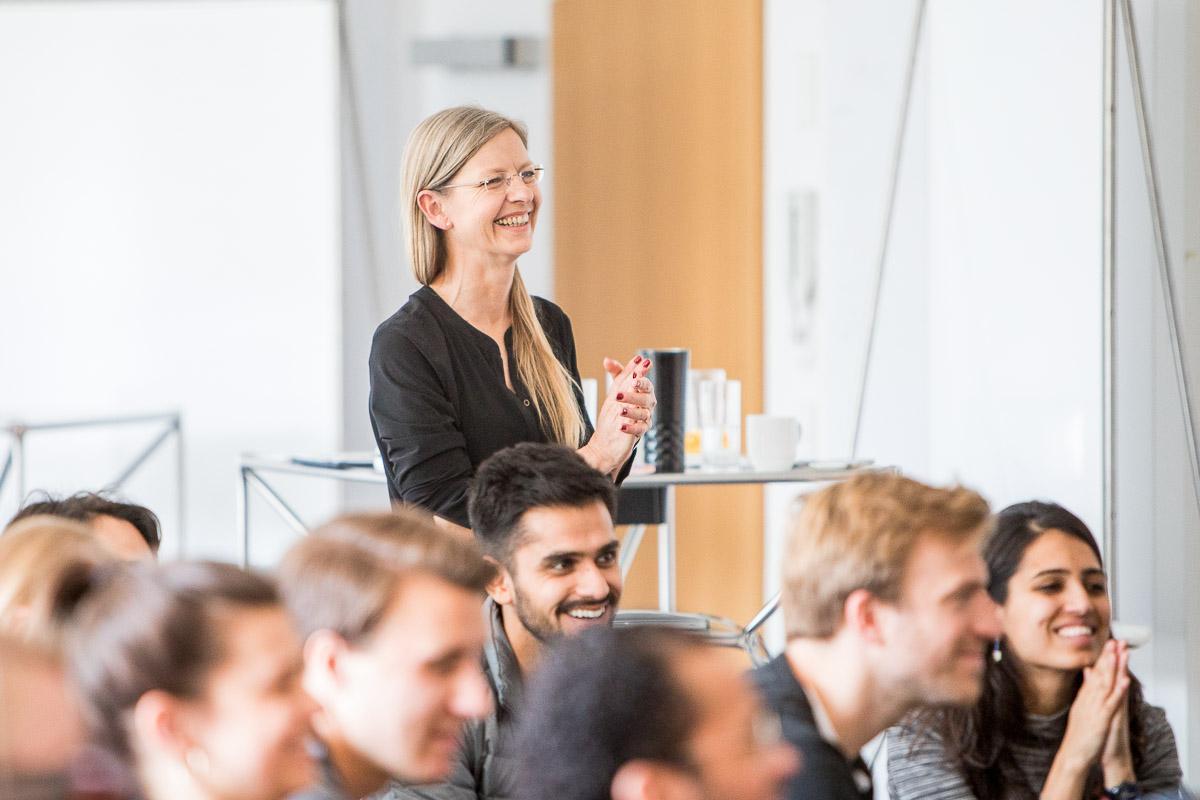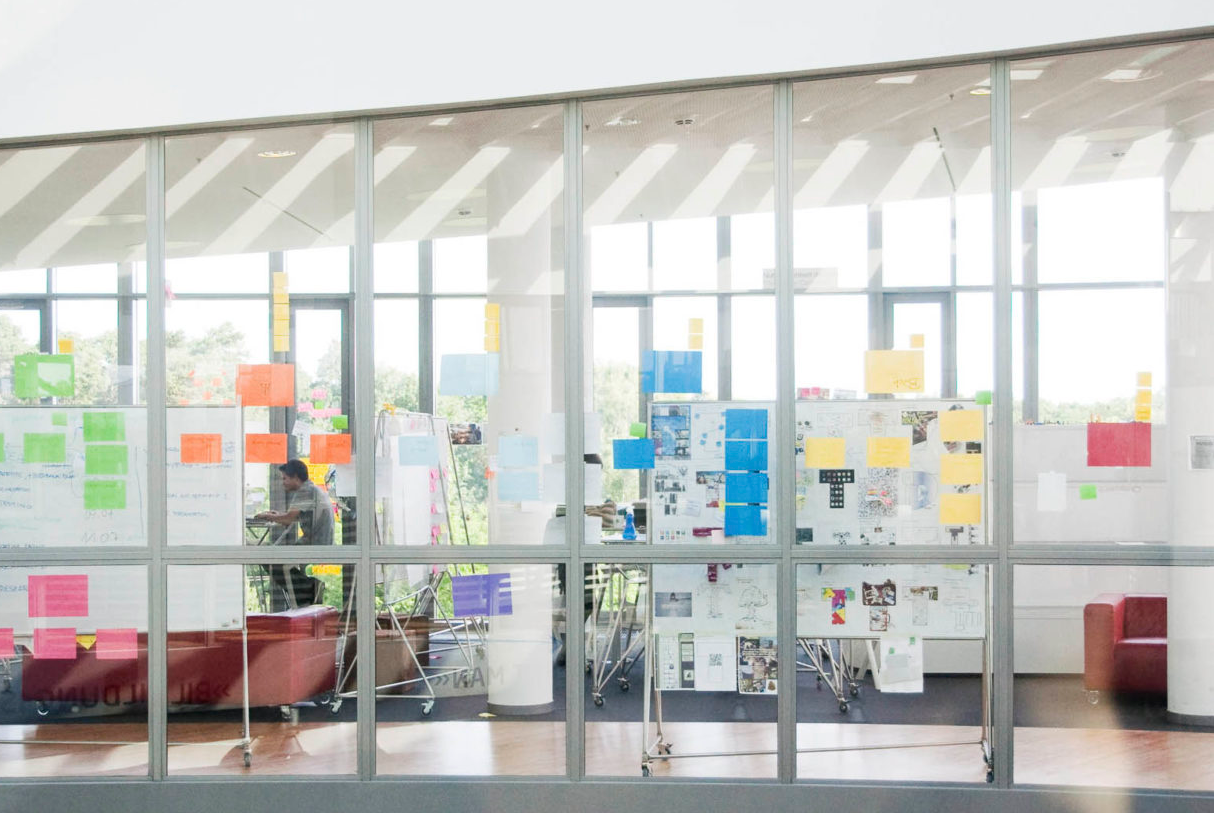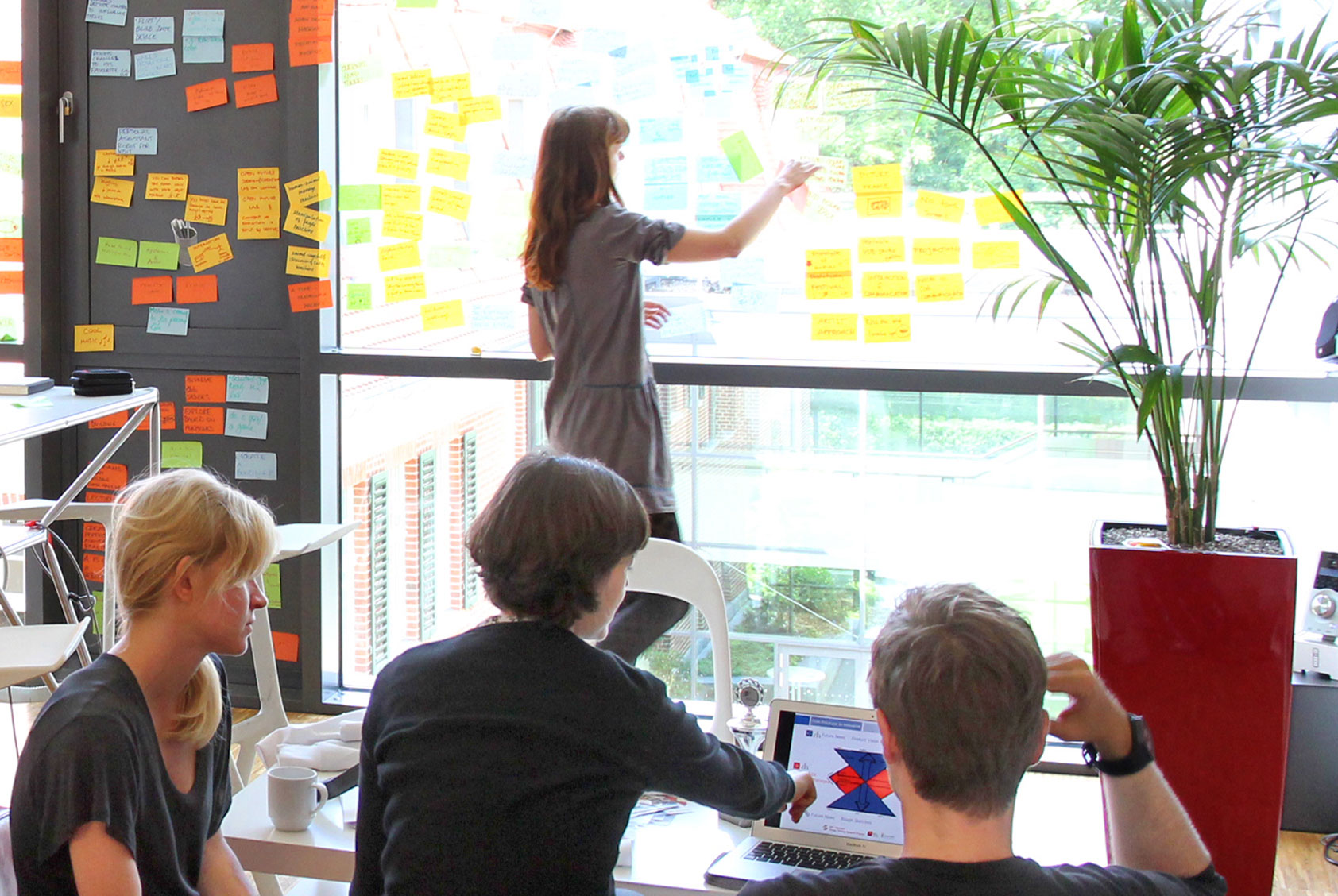
Design Thinking is an innovation approach that puts humans at the center of development work. But what is Design Thinking, how does the approach lead to innovations and why is visualization such a vital element in the innovation processes? To find out more about the underlying philosophy, we spoke to Dr. Claudia Nicolai, Academic Director & Co-Head at HPI D-School in Potsdam, the leading academic Design Thinking institution in Europe.

To start out - what is your role at the HPI D-School?
“As academic director/co-director at the HPI D-School, my main areas of work are programme design for our four study programmes and our coaching programme, research projects on Design Thinking as well as developing innovation projects with partner companies and organizations. Additionally, I use my experience to educate and support new D-Schools, such as in Malaysia, South-Africa, and Chile with their strategic design. I work closely together with Prof. Ulrich Weinberg and we are very complimentary. Our different backgrounds also lead to different perspectives on ‚Design Thinking‘, which is really enriching.”

A lot of people have probably never heard of „Design Thinking“ before. How do you explain “Design Thinking” to a stranger at a birthday party?
“Hm, there is no simple answer, I am afraid. I would say that it is a novel approach building on creative thinking and doing in teams to discover new things in the world. The methods can be applied to product and service innovations when it comes to an external focus, but they can also be applied to business designs, internal change processes and help to identify strategic futures. As an example: if an automotive group that has always built cars says ‘I want to become a mobility provider’ - what does that mean? Here, it would be too shortsighted to improve only the product offering, the driving or service experience. Because if you want to reinvent yourself as an organization by designing completely new strategic solutions and new organizational networks, you will have to apply a systemic Design Thinking-perspective that goes beyond user-centricity.”
“We always aim to bring the distributed
knowledge together in a concentrated way.”

What are the key requirements for successful ‚Design Thinking‘?
“For me, these are the following four principles: The first principle is empathy: do I understand today's and tomorrow’s customers? Can I guide them into the future and offer what will be valuable for them? But that also applies to the inside - do I also have empathy for my team members? The second principle is exploration. Design Thinking is designed as an iterative process, which means that is not only one solution we are thriving for, we are trying to build several prototypes early on. This leads to the third principle experimenting and challenging ourselves to incorporate possible future technologies, such as artificial intelligence. And the fourth is the engagement – the commitment to the team, not just to be creative, but to take responsibility for implementing your ideas. Really focusing on the team and being present is very important.”

What kind of background do Design Thinkers typically have?
“Ideally, the team consists of a wide variety of backgrounds, because diversity of expertise’s is incredibly valuable during the search for new solutions. Of course, you can always ask Design Specialists to focus on Design challenges, but perhaps someone coming from Cultural Management or an Engineer or a Data Analyst will also have good contributions to make. We always aim to bring the distributed knowledge together in a concentrated way. Ideally, the team benefits from the way people are differently shaped in their approach to things, because the Design Thinking process requires both rational and intuitive thinking in different phases.”
“Visualization makes communication
more transparent, comprehensible and slows it down a bit.”

And during the collaboration - why is it so important to not only share ideas, but also to visualize them?
“That has to do with three things. The first, of course, is the core of visualization - a picture says more than a thousand words and above all says more about how I really imagine an idea. If I for example say 'personal service' - what is my idea of 'personal service'? Is it sufficient for me to be addressed with my name at the hotel reception? Or do I want a piece of chocolate on my pillow? Or if I look under the bed that there is a sign "yes, we also vacuum-cleaned here"? Or is it a personal butler, a robot or a call center? Visualization helps to frame what I mean.
The second is to make communication more transparent and comprehensible and also more reflective, because sometimes we are very fast in reacting to others with words without too much of thinking. When I visualize my thoughts first, I have already started to reflect on whether it is a good idea or not. Thirdly, it is also important that the team actively records their ideas by visualizing and writing them down to understand what they think is important at the moment.”
“It is really important to use a certain visualization tool consciously.”

Are there big differences regarding the visualization depending on the phase of the Design Thinking process?
“Absolutely, for example in the beginning, visualization serves mainly to work out a structure together and develop a shared understanding of the problem. Teams typically create a concept map together where they write down their definitions, they map out stakeholders, processes and user journeys that they sketch together on a whiteboard.
Especially when we start with beginners to Design Thinking, we choose to work mainly with analogue visualization tools which are, if you will, a radically different way of collaboration in our digital era. Many of our students are actually very good with virtual tools and virtual platforms, but we want to teach them that it's first of all about having a conversation that is facilitated with visualization. Our experience is that the use of virtual platforms from the very beginning has a big impact on the team. Working with analogue tools is much more democratic and underlines the principle of participation and co-design. And once you've understood that, you can then transfer that back into a virtual world and apply it there. In fact, with any kind of project team, it makes sense in my opinion to discuss and decide 'what do I do analogue and why' and 'what do I do virtually'. It is really important to use a certain visualization tool consciously.”